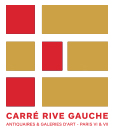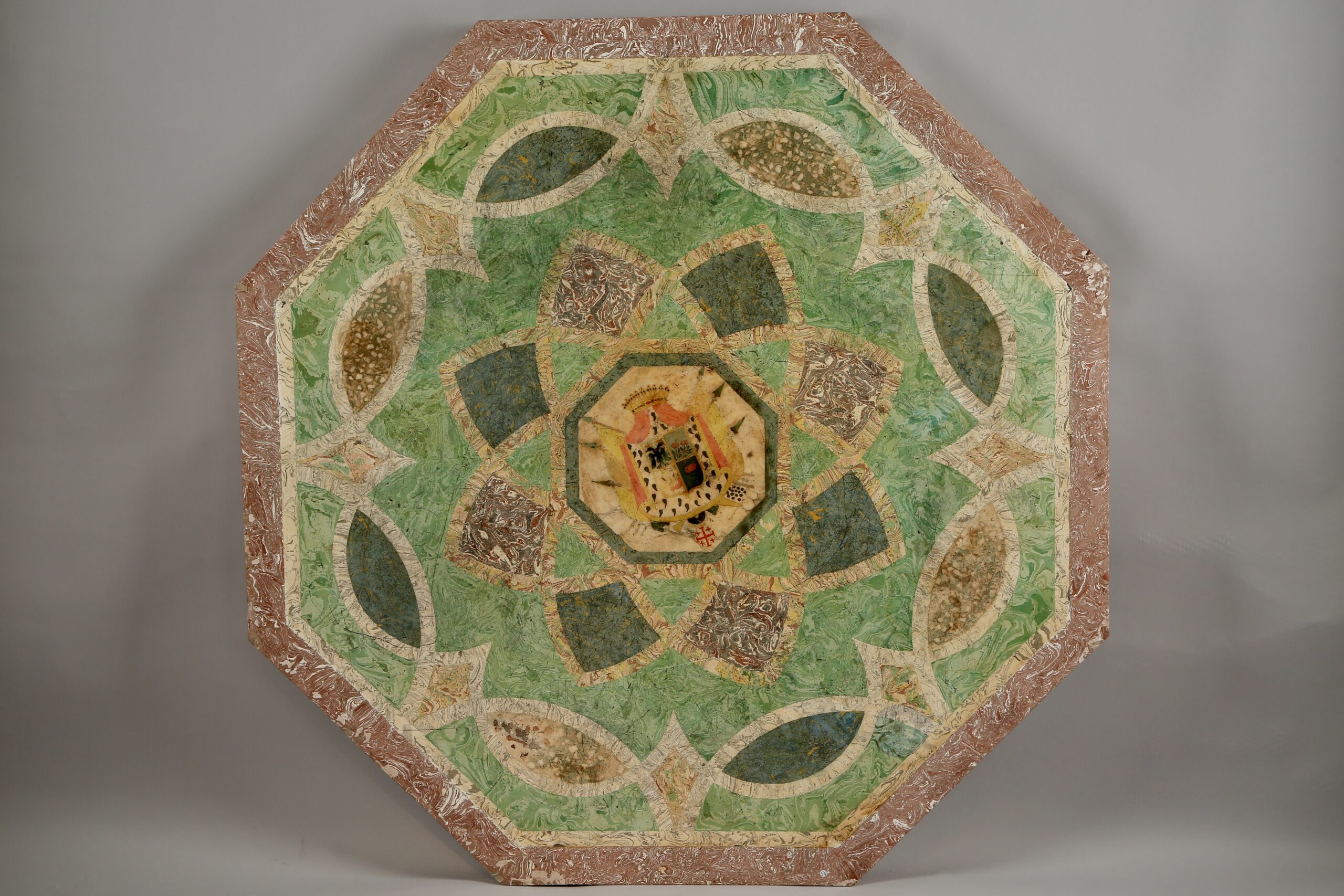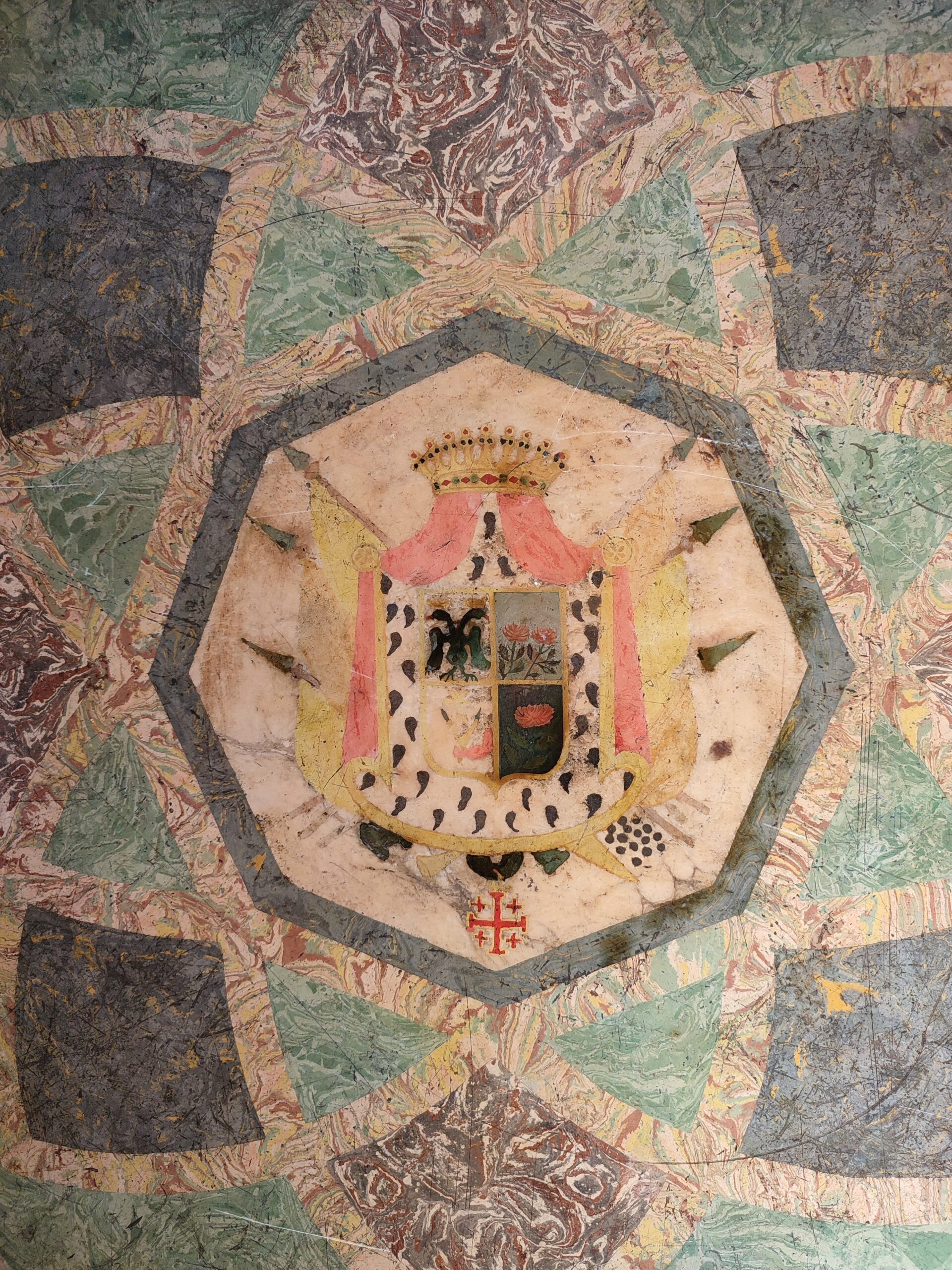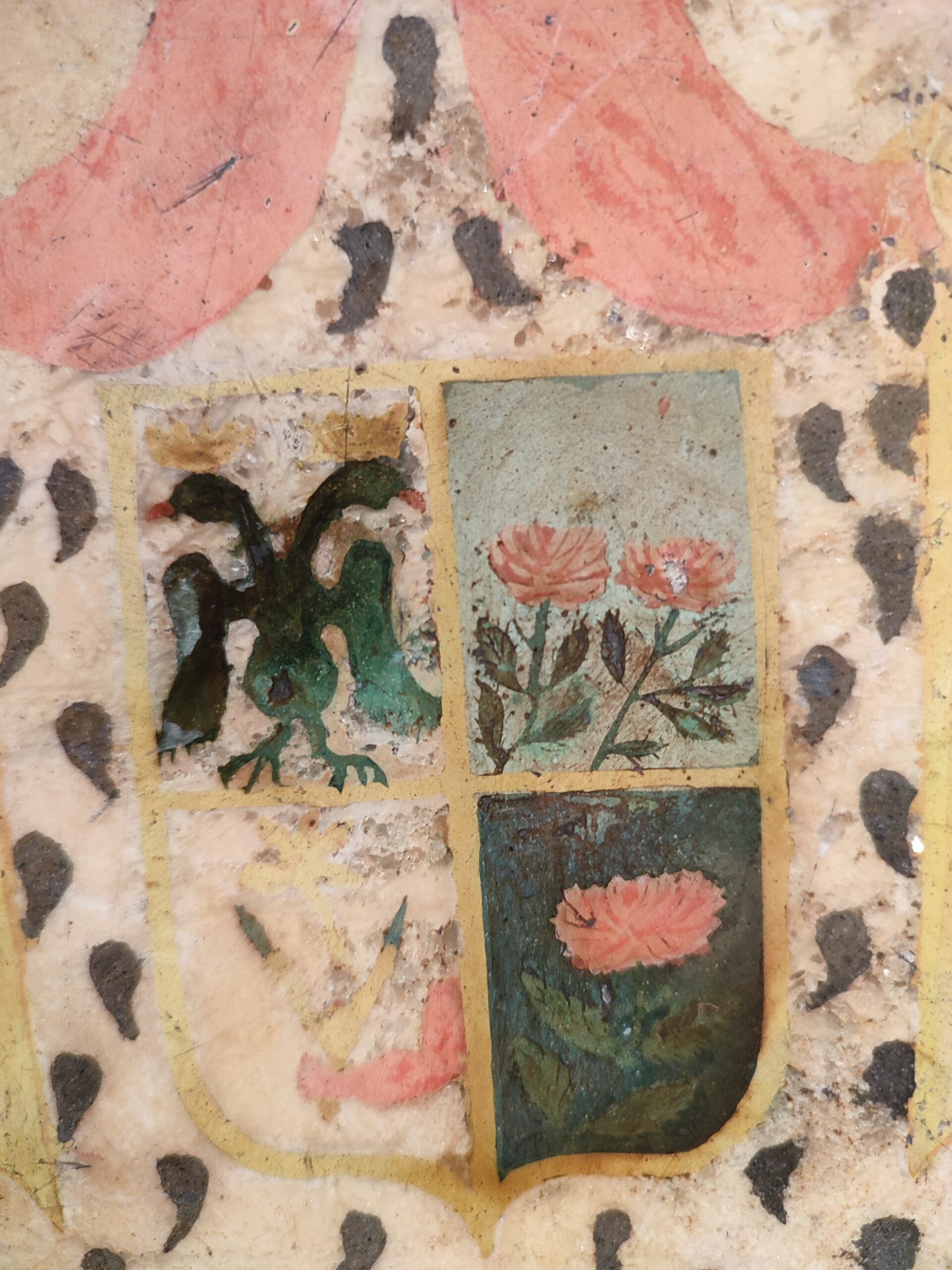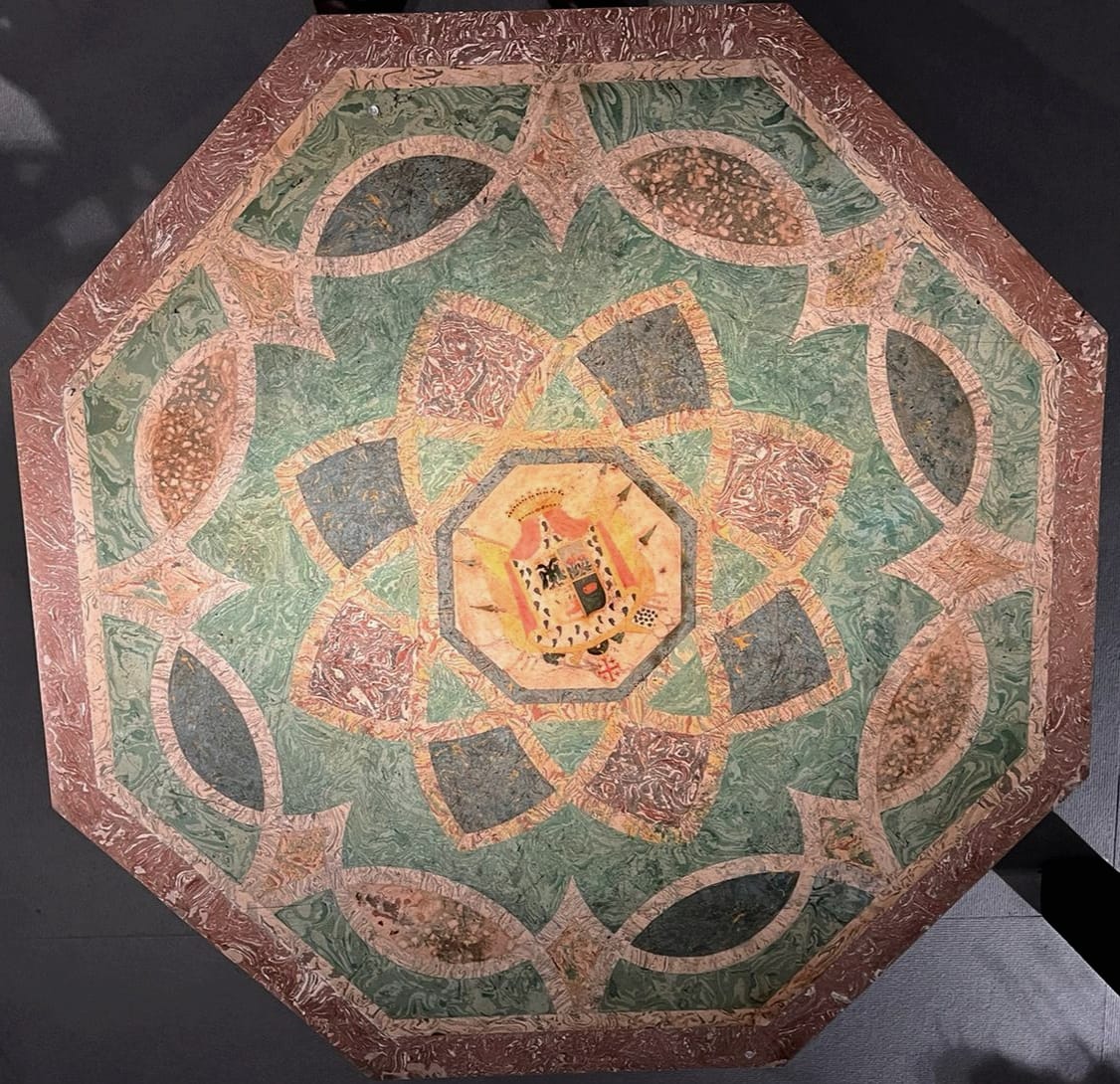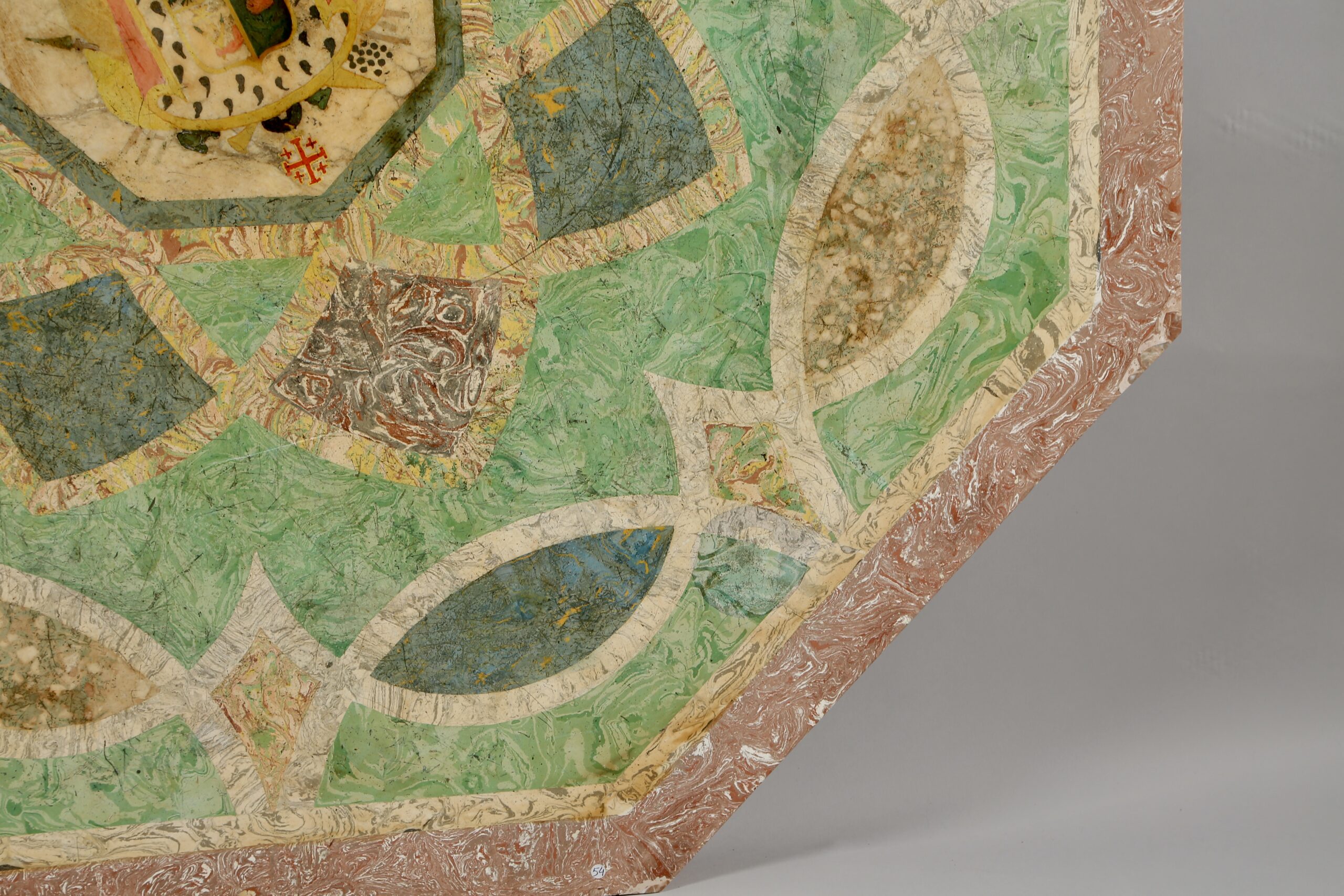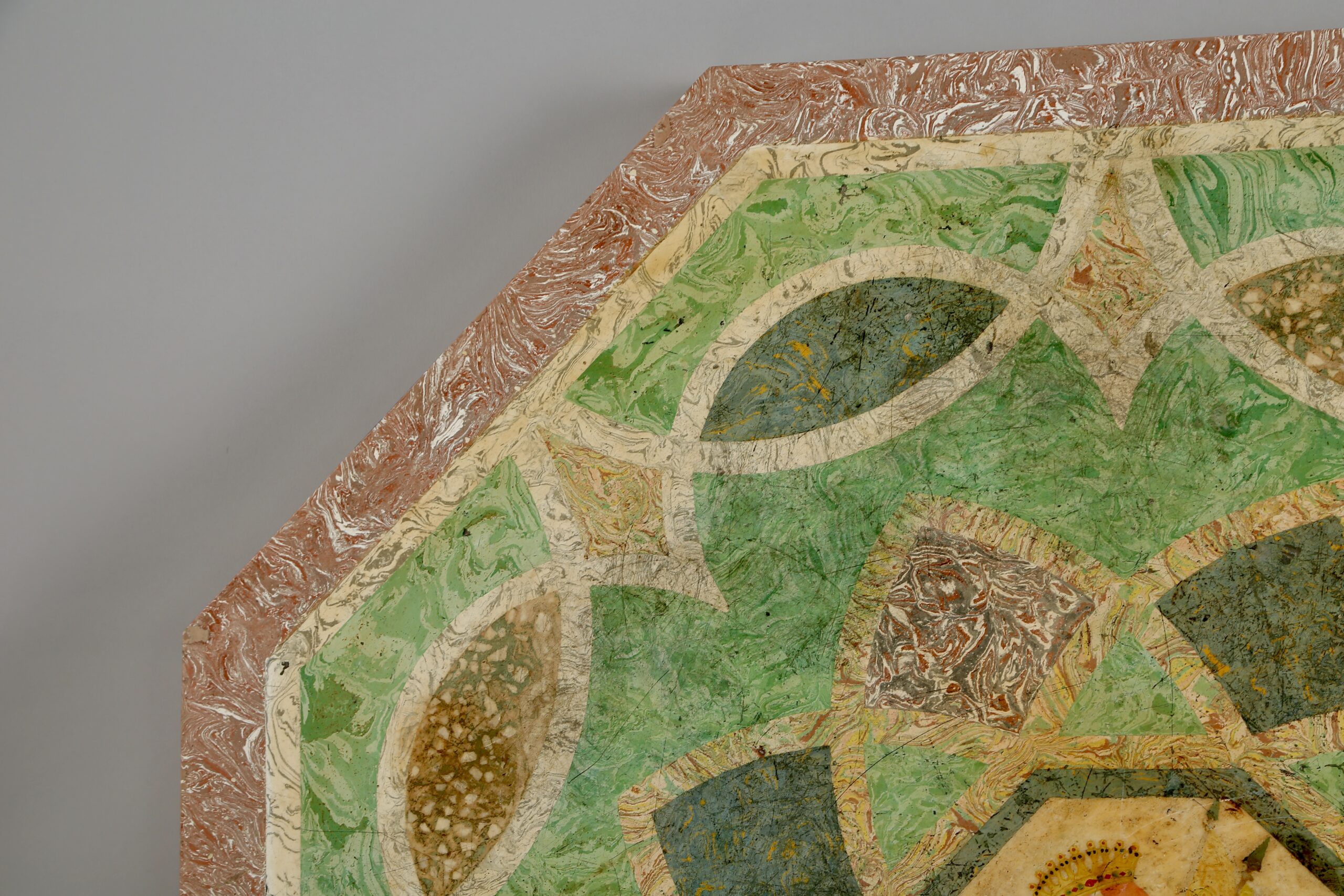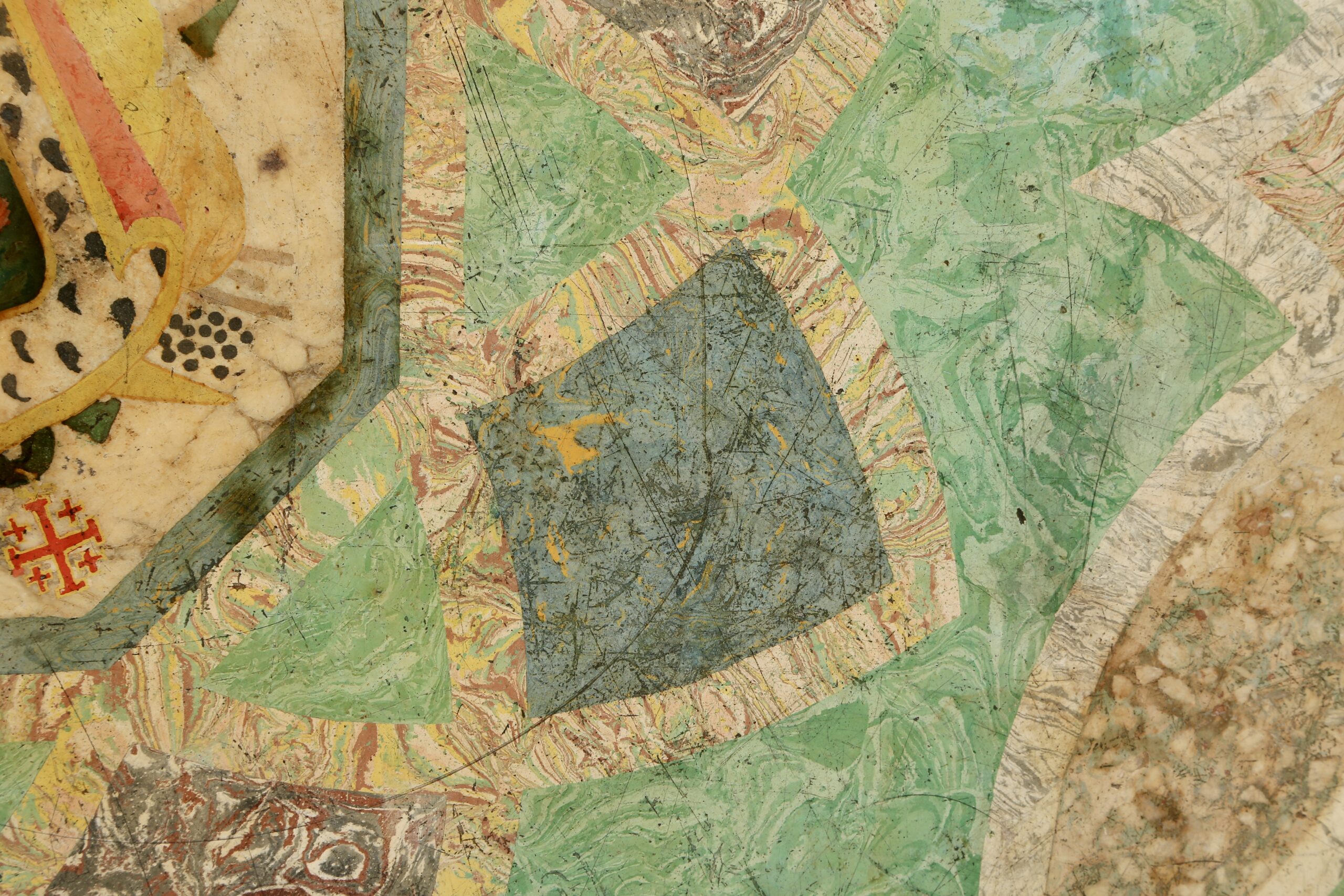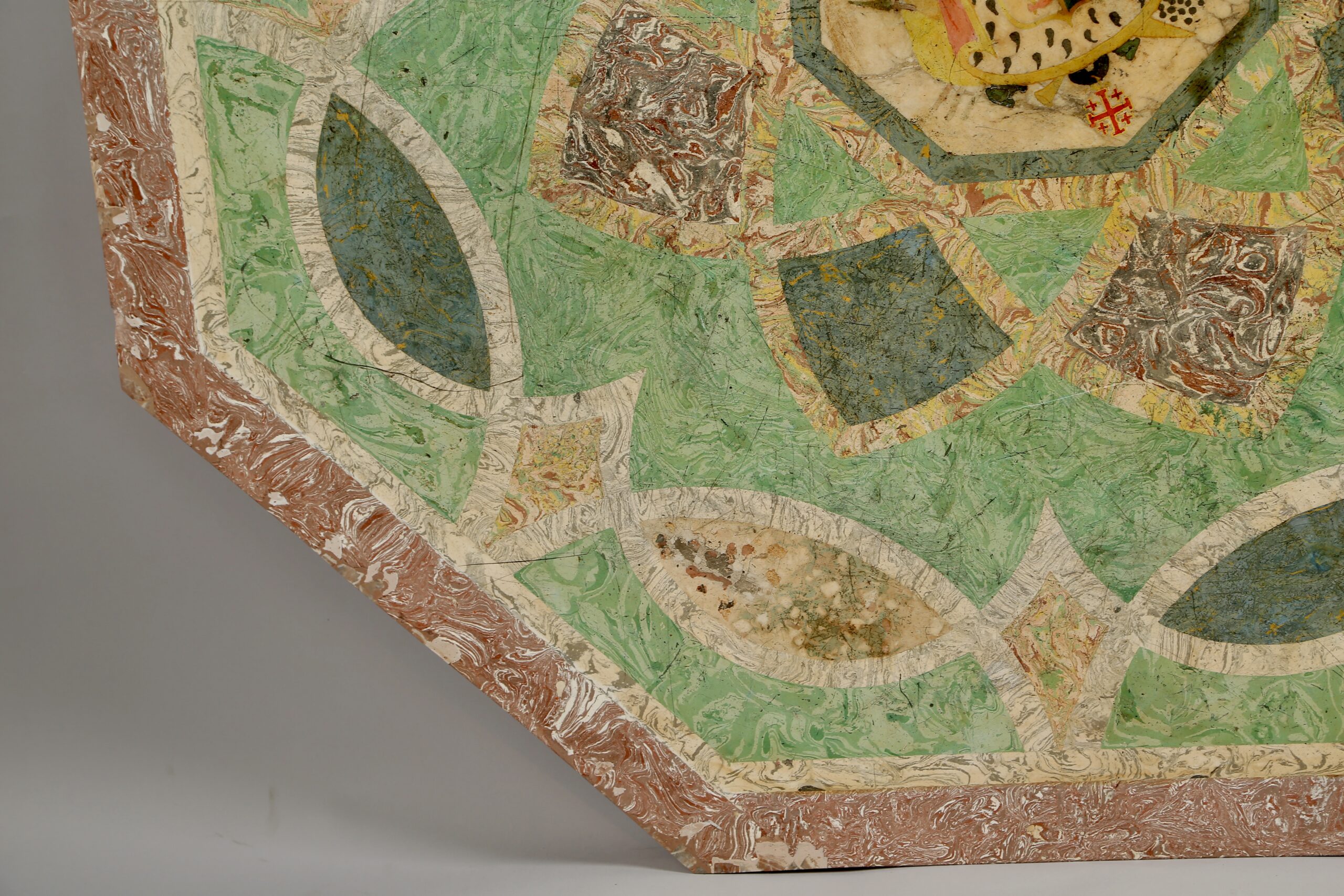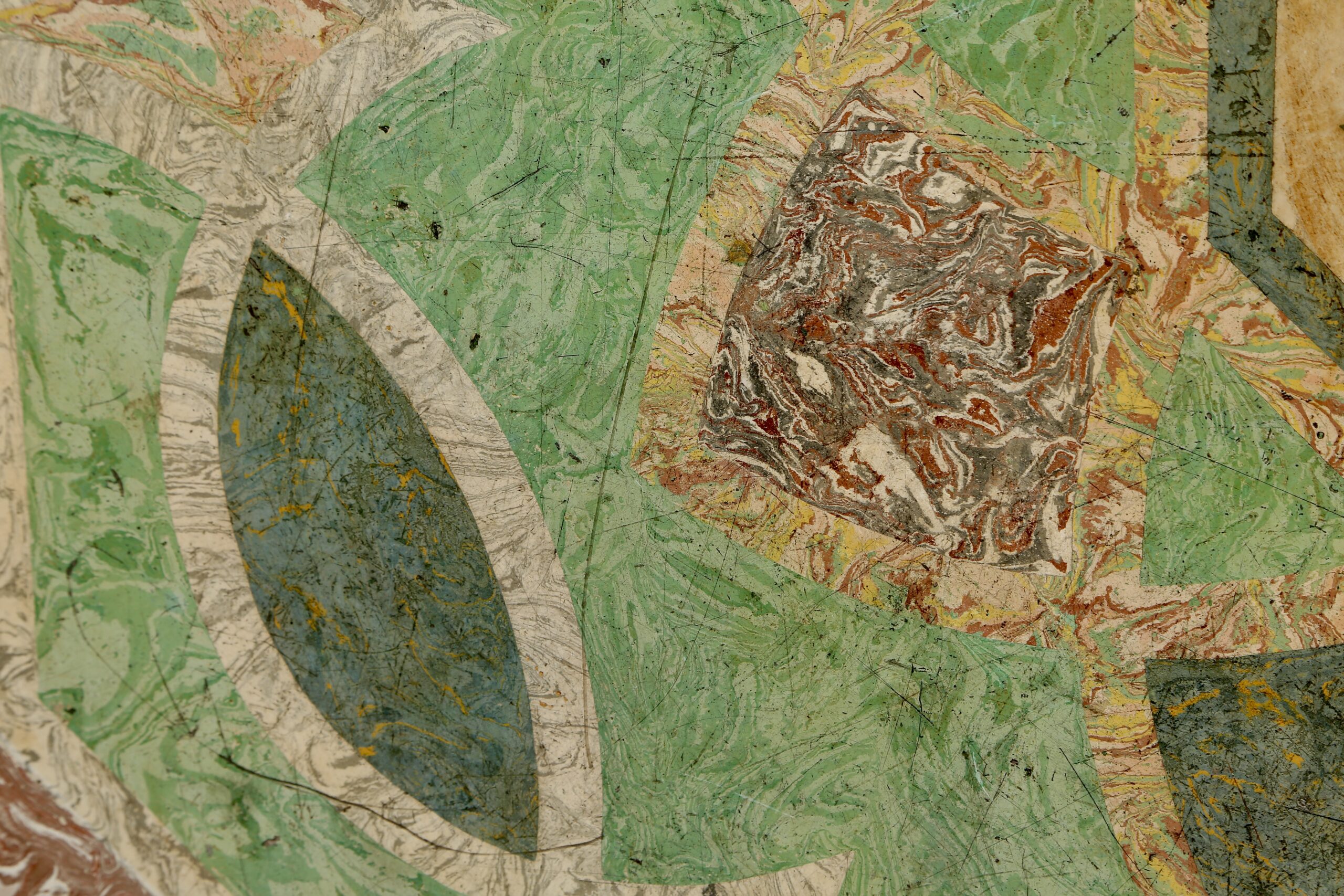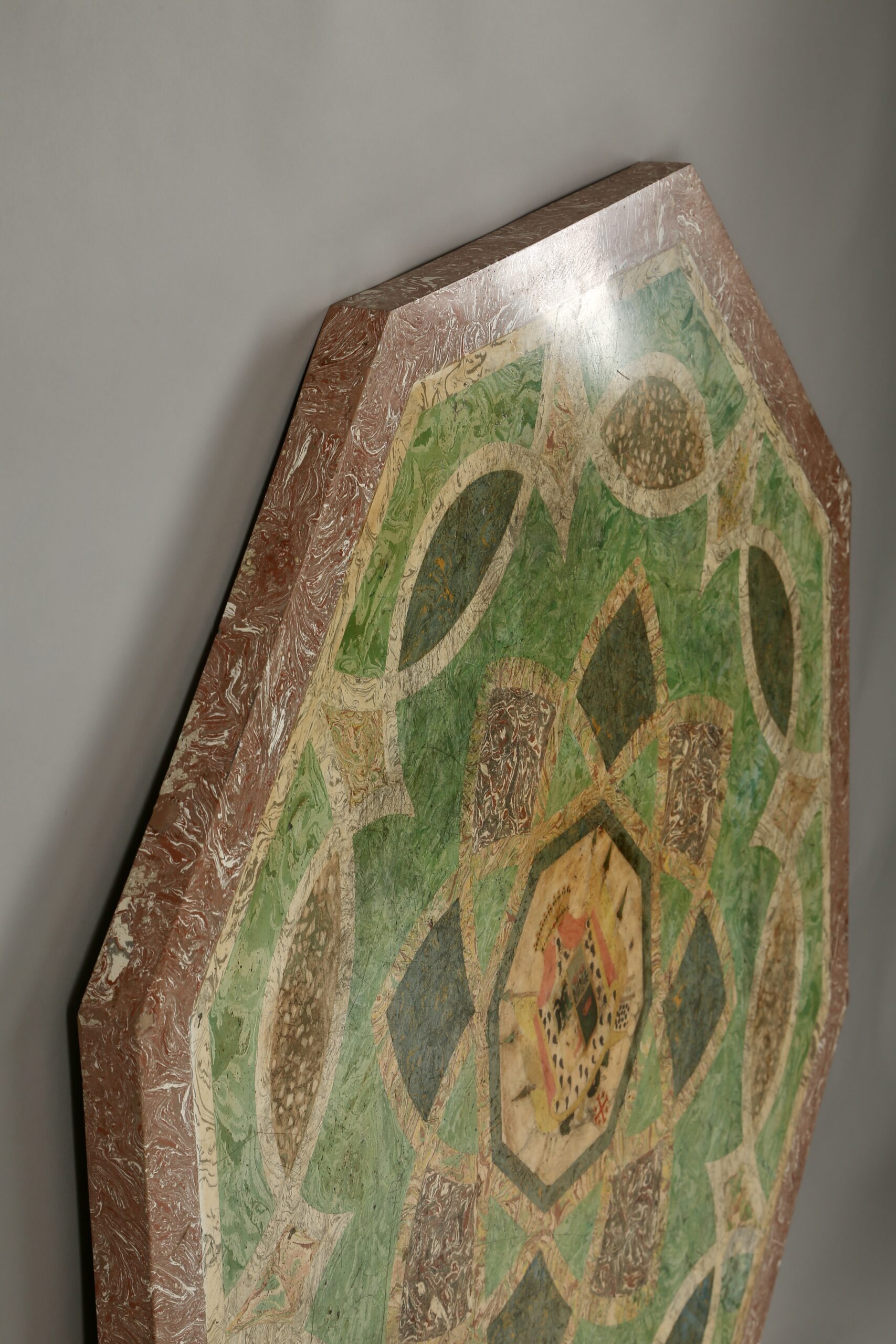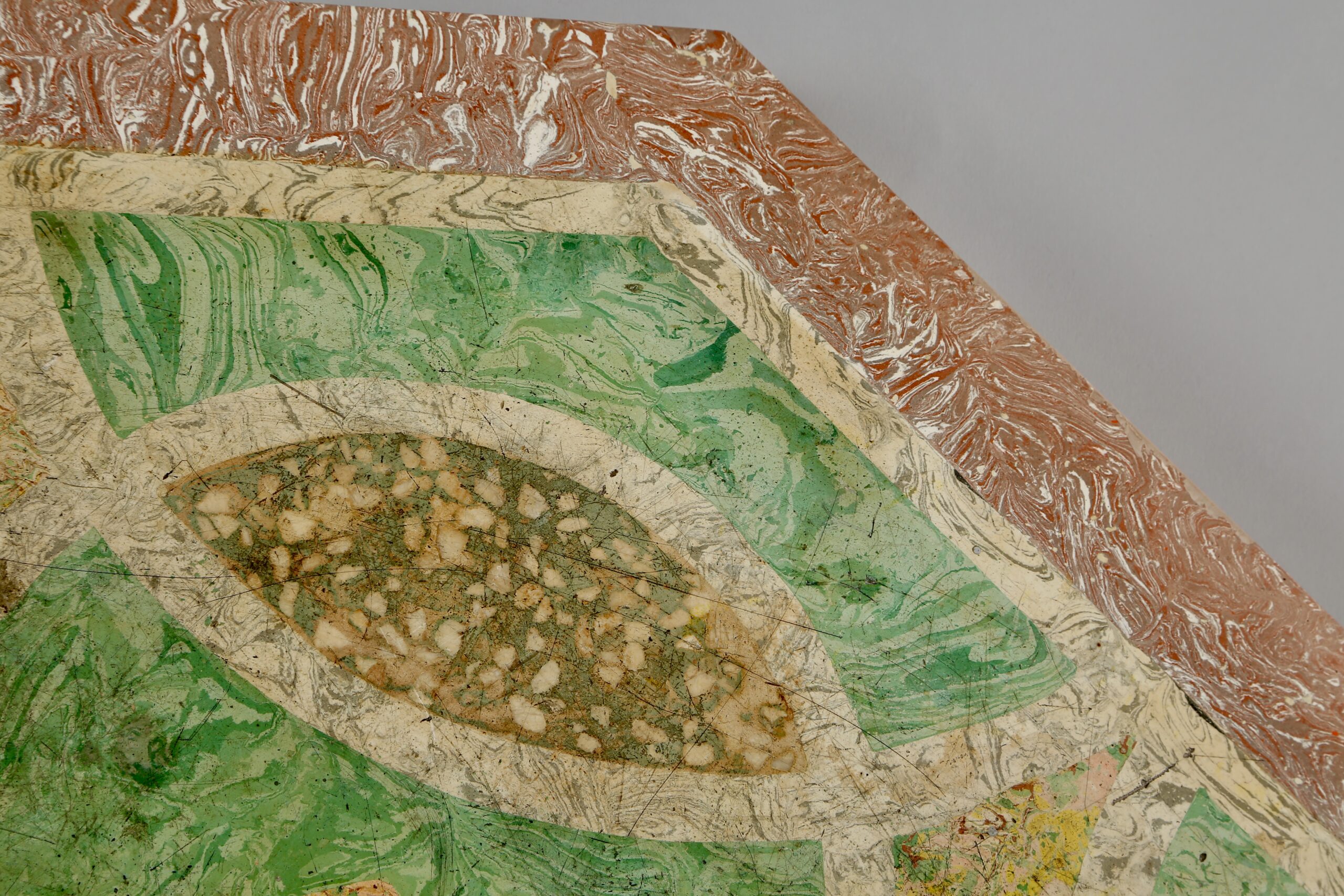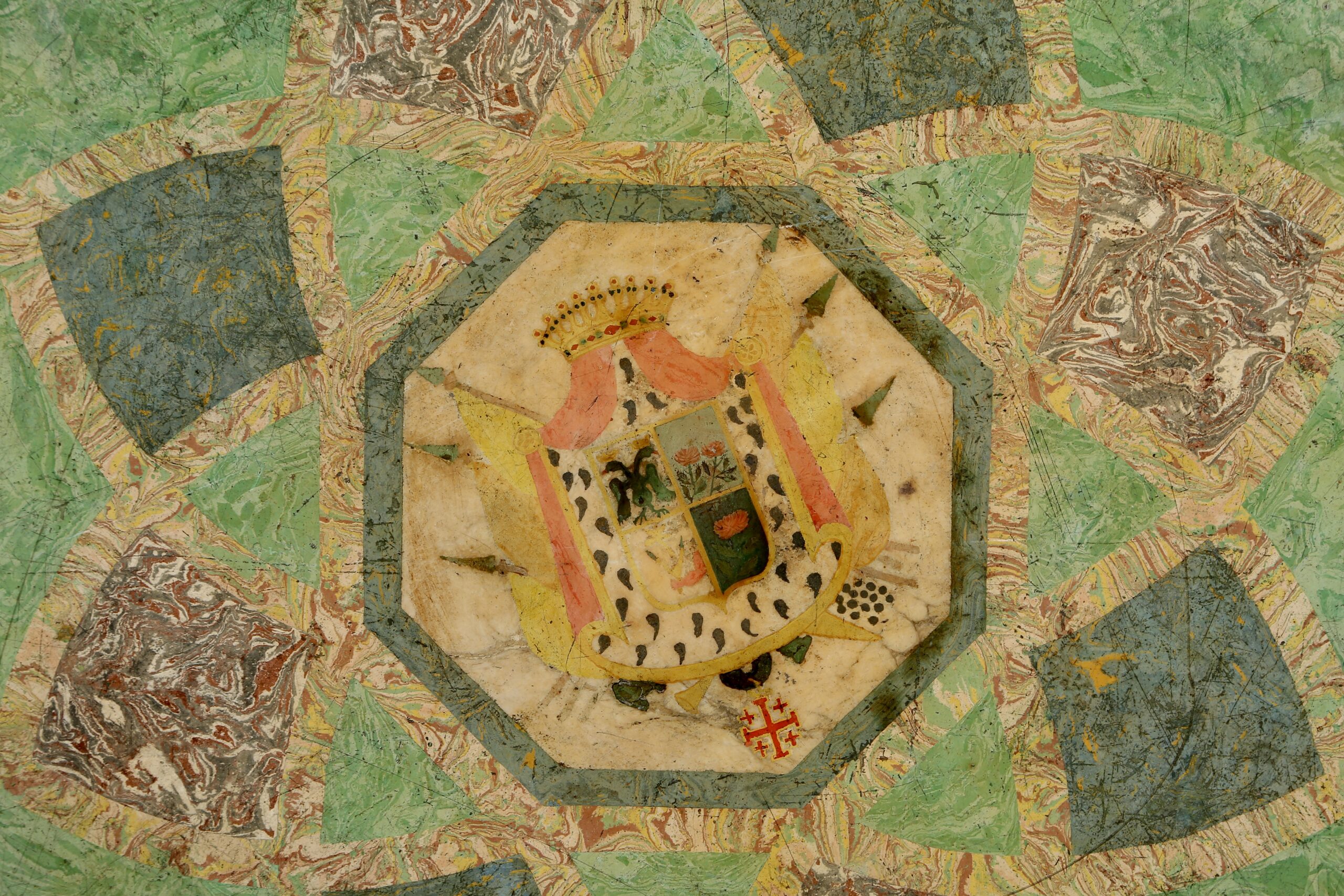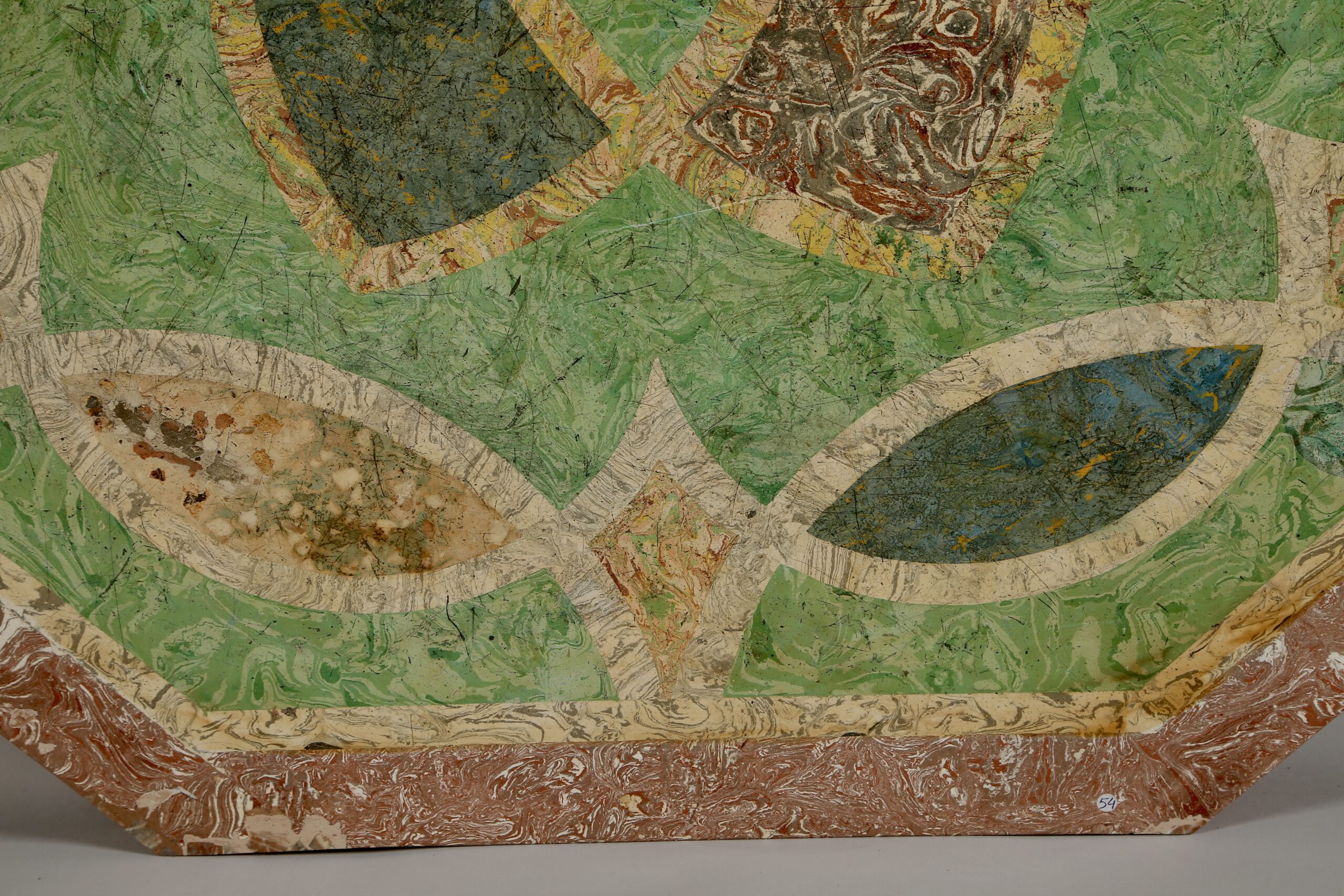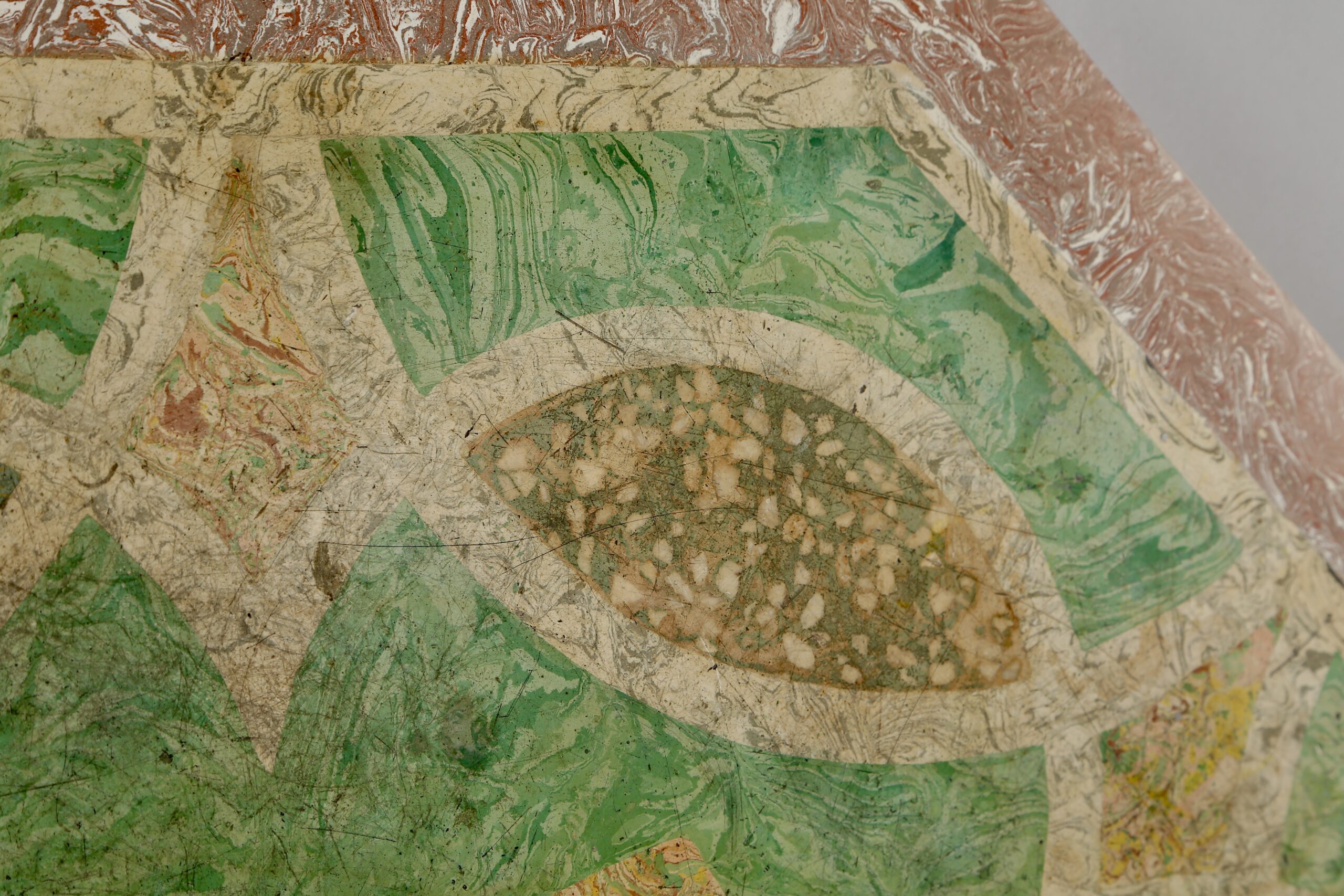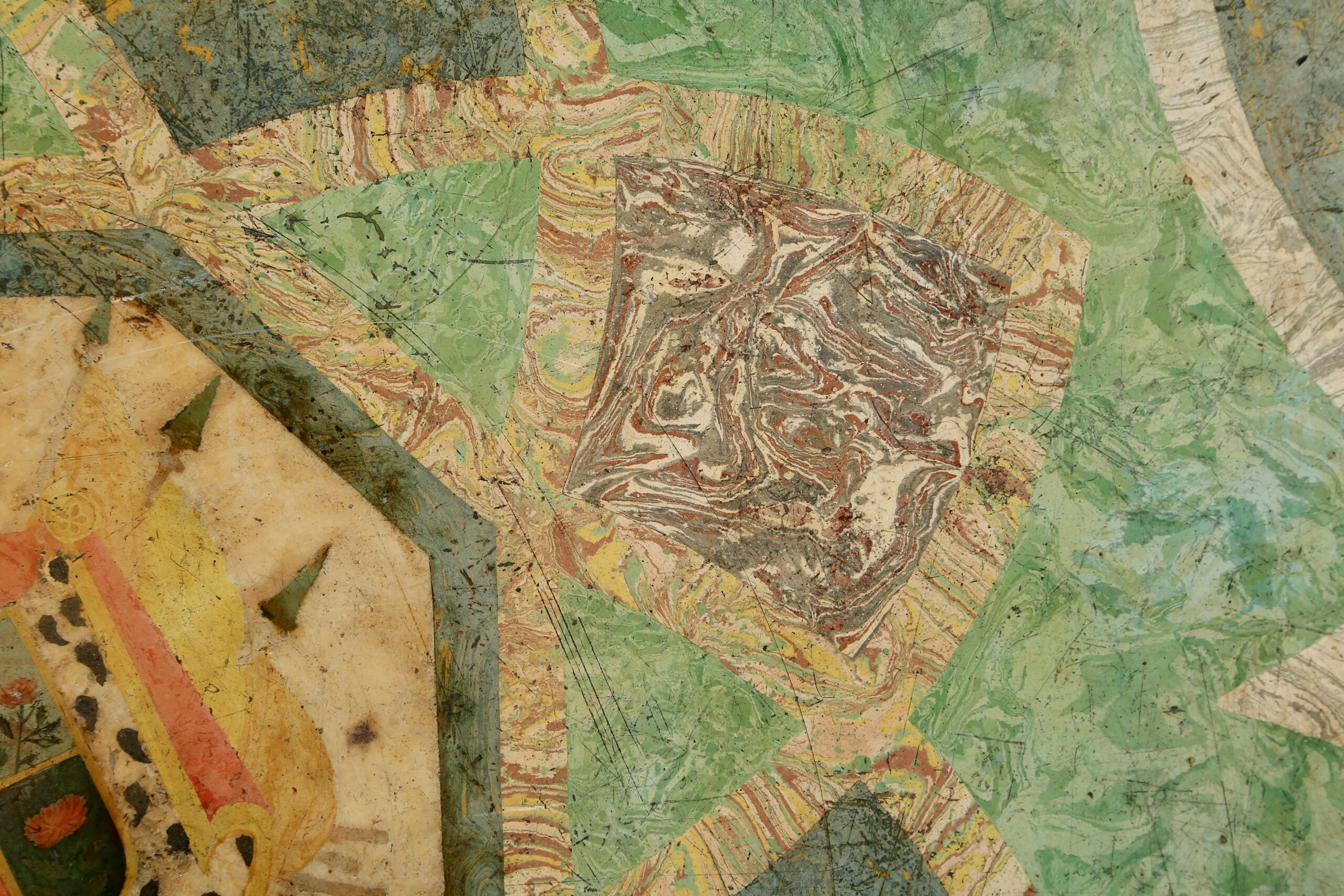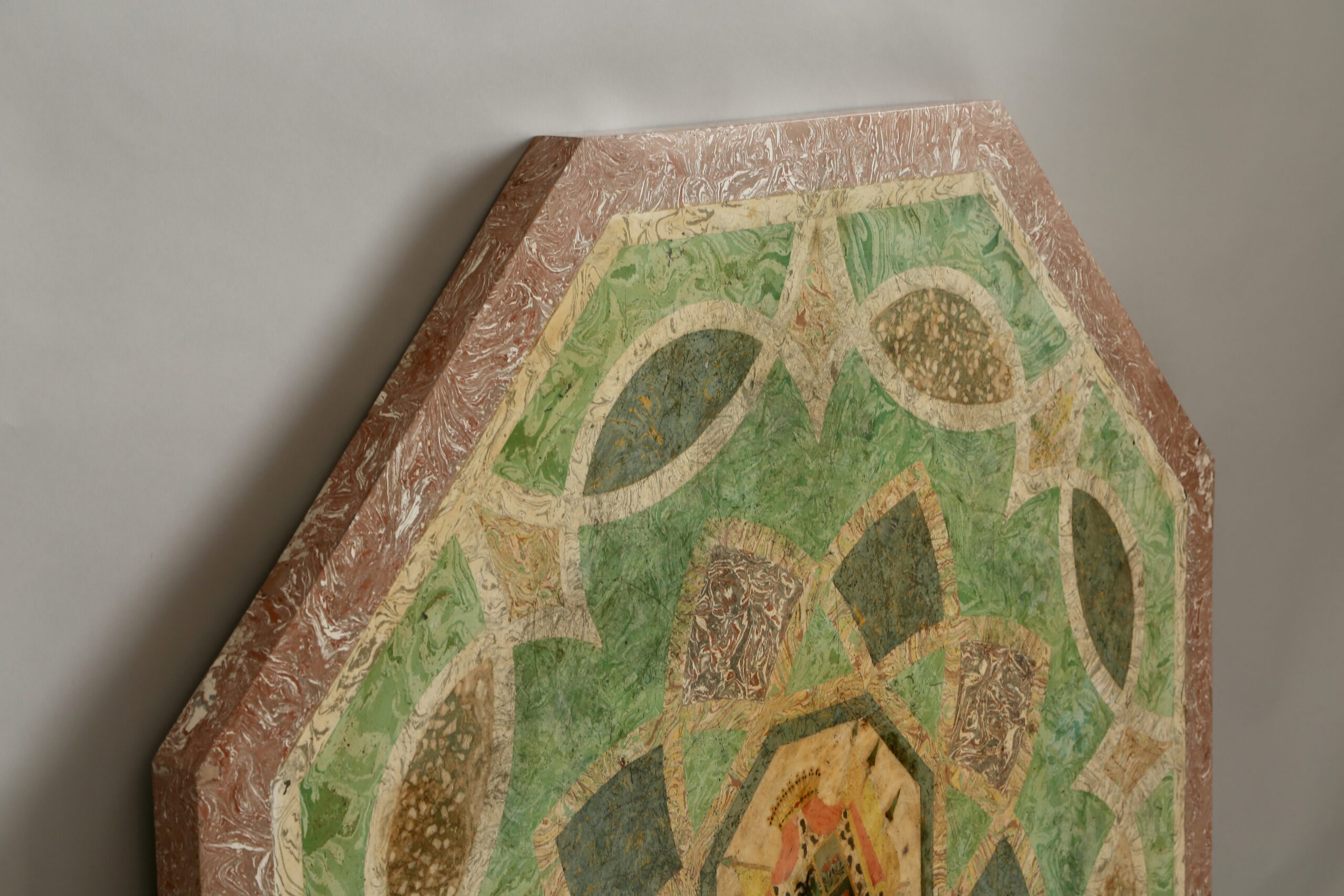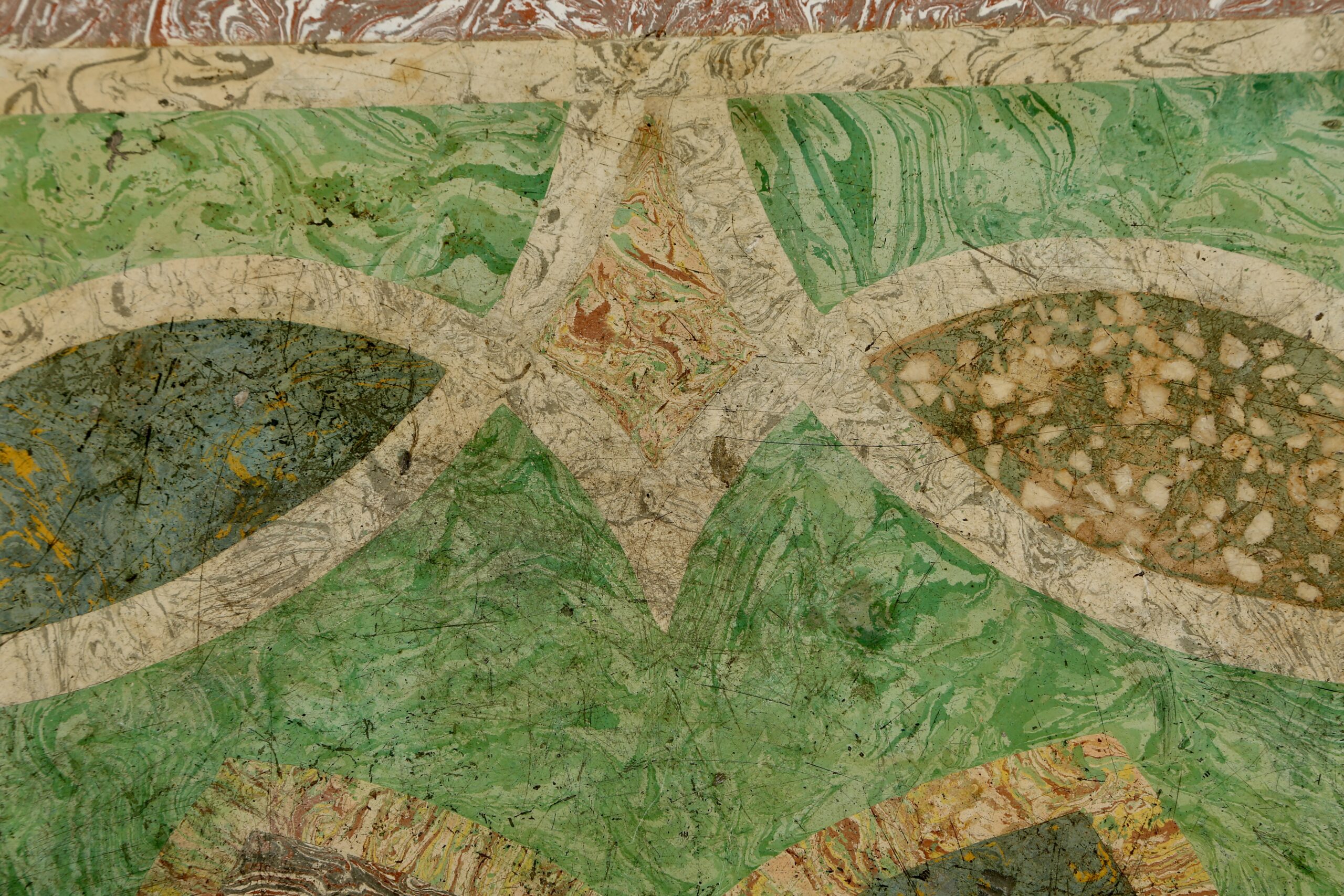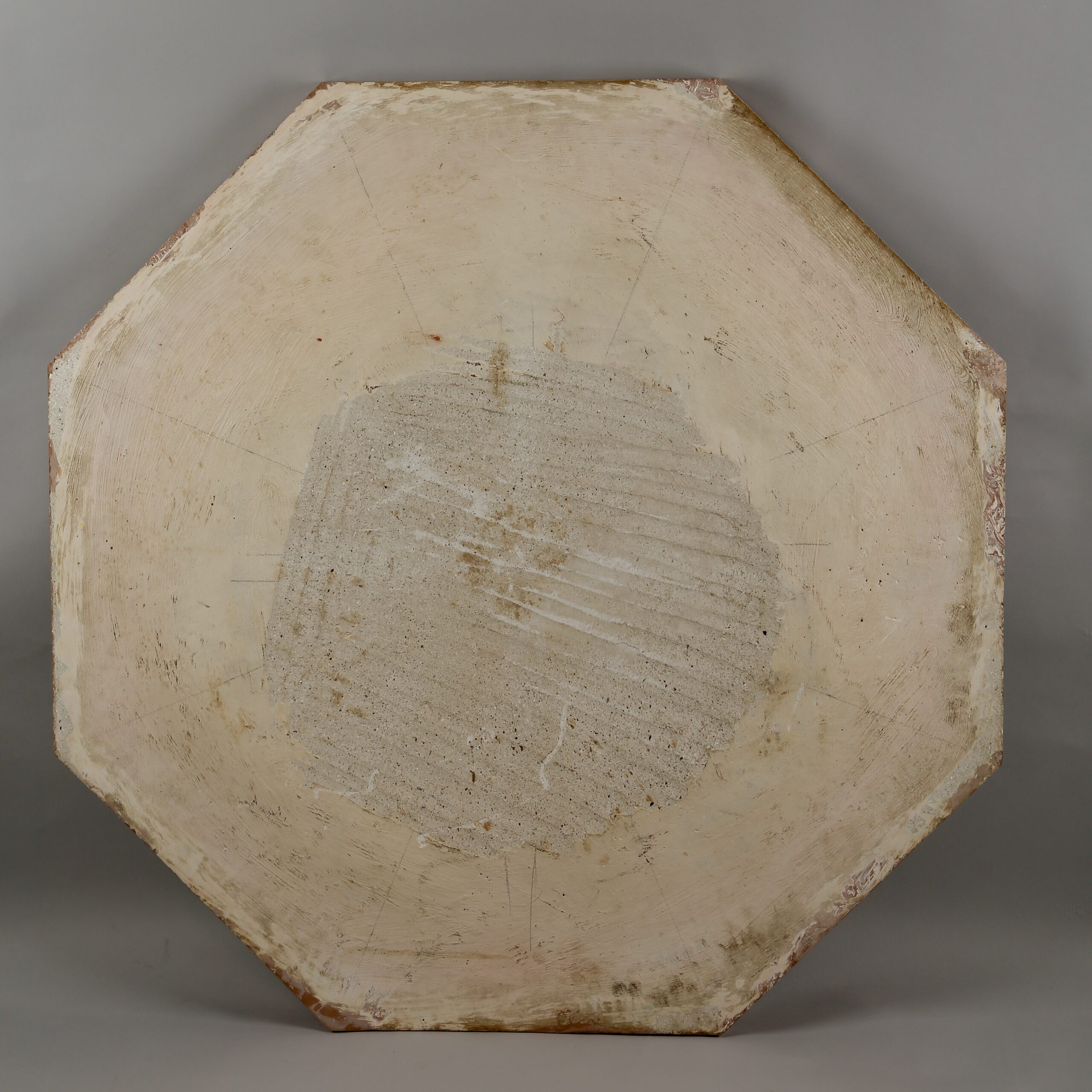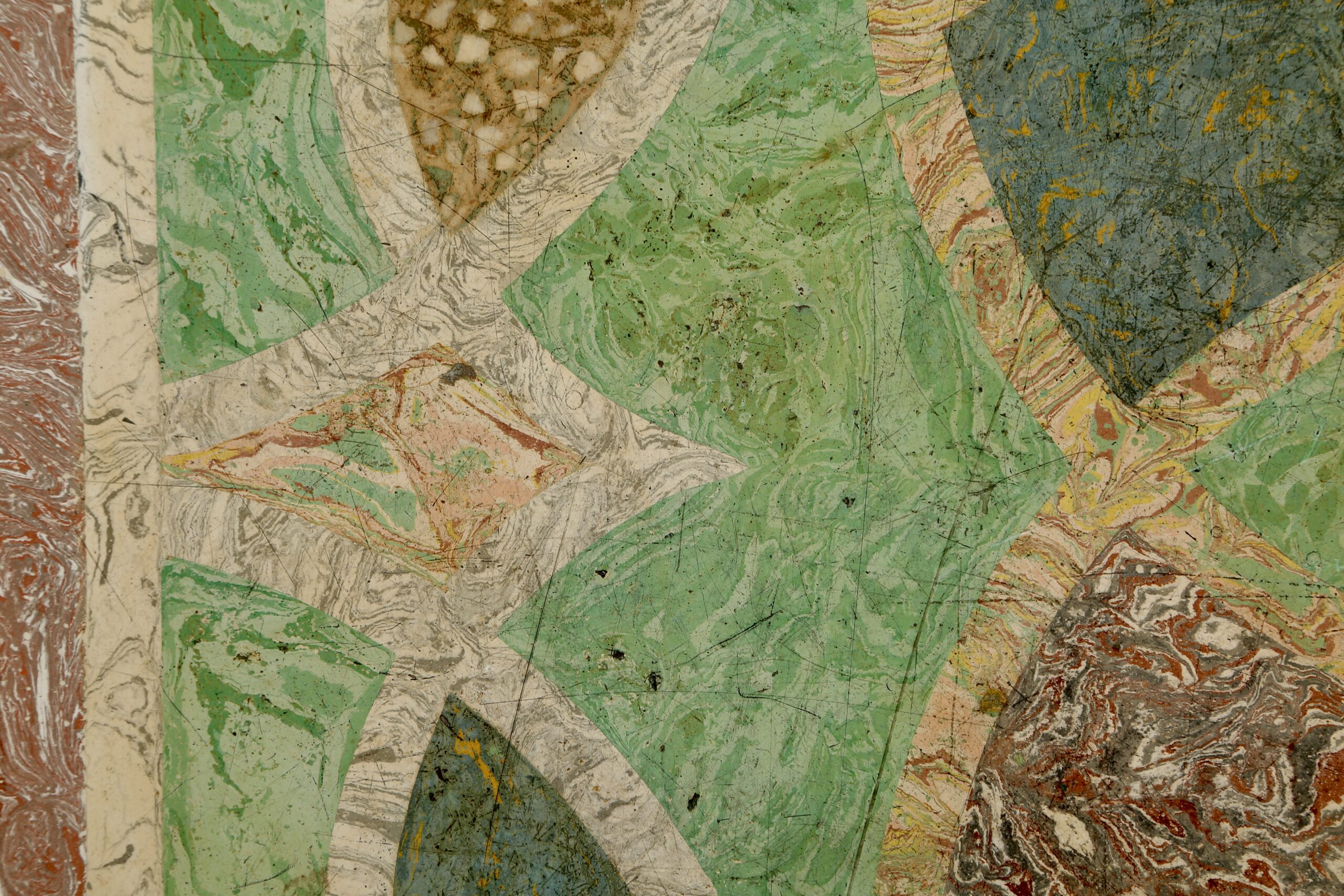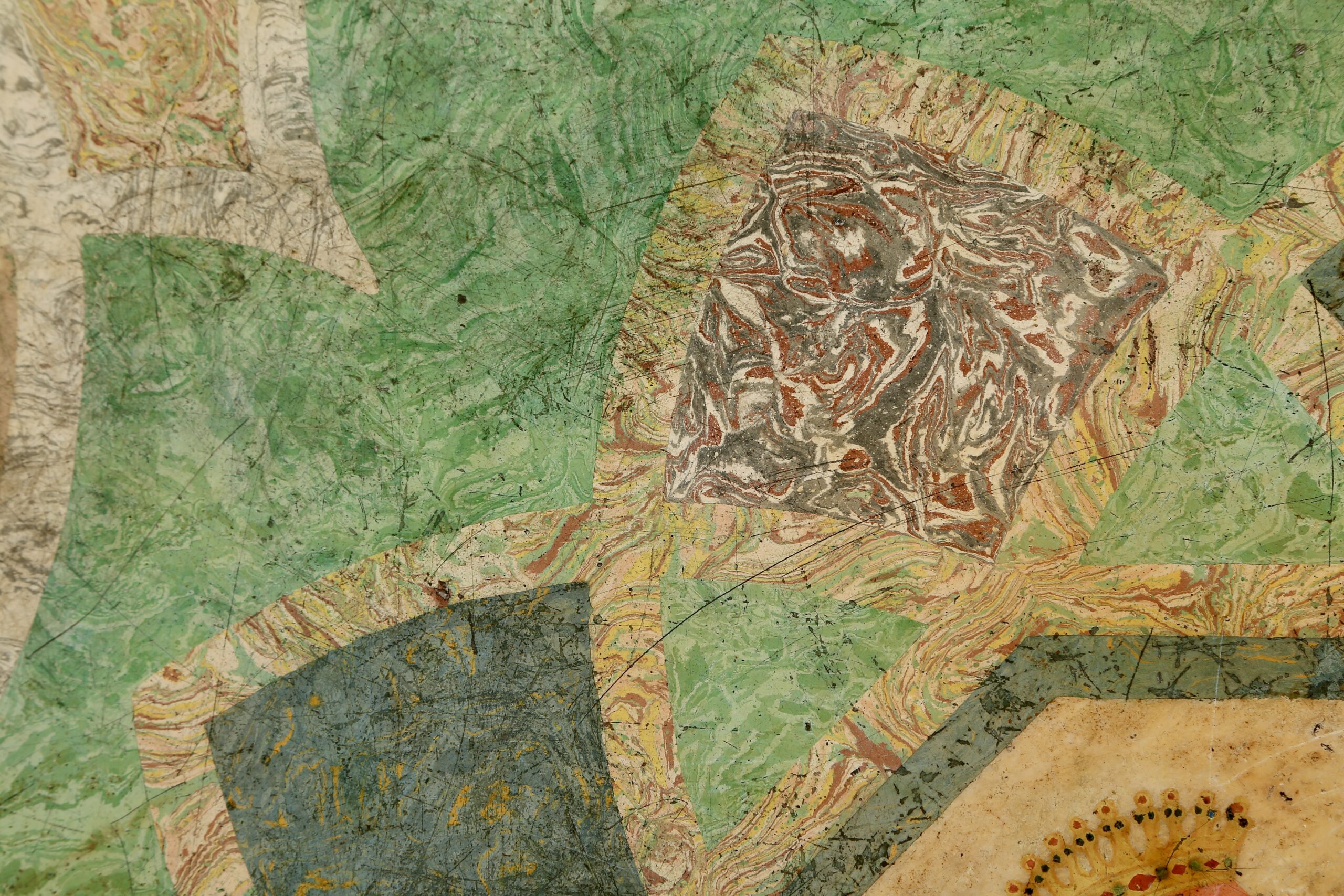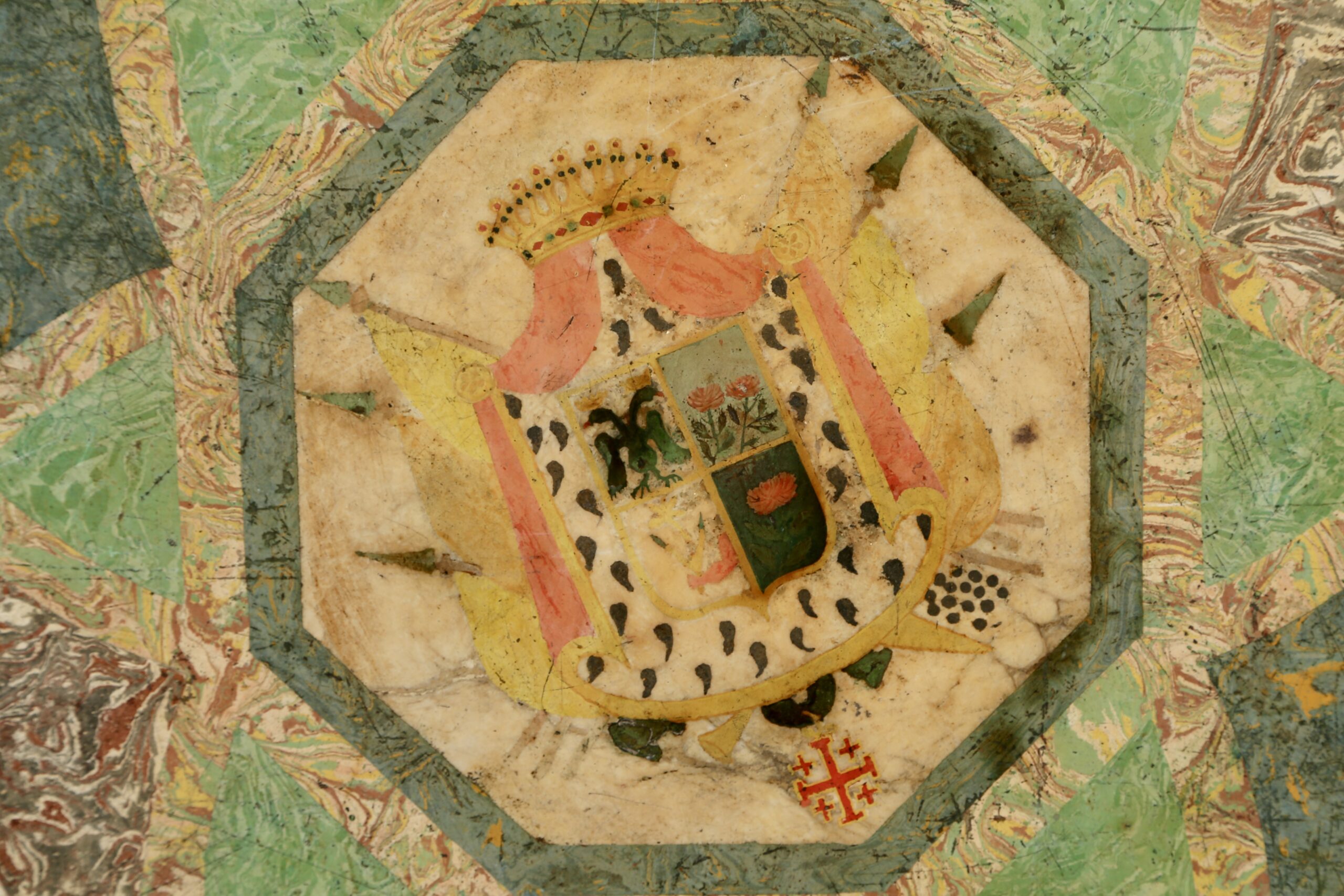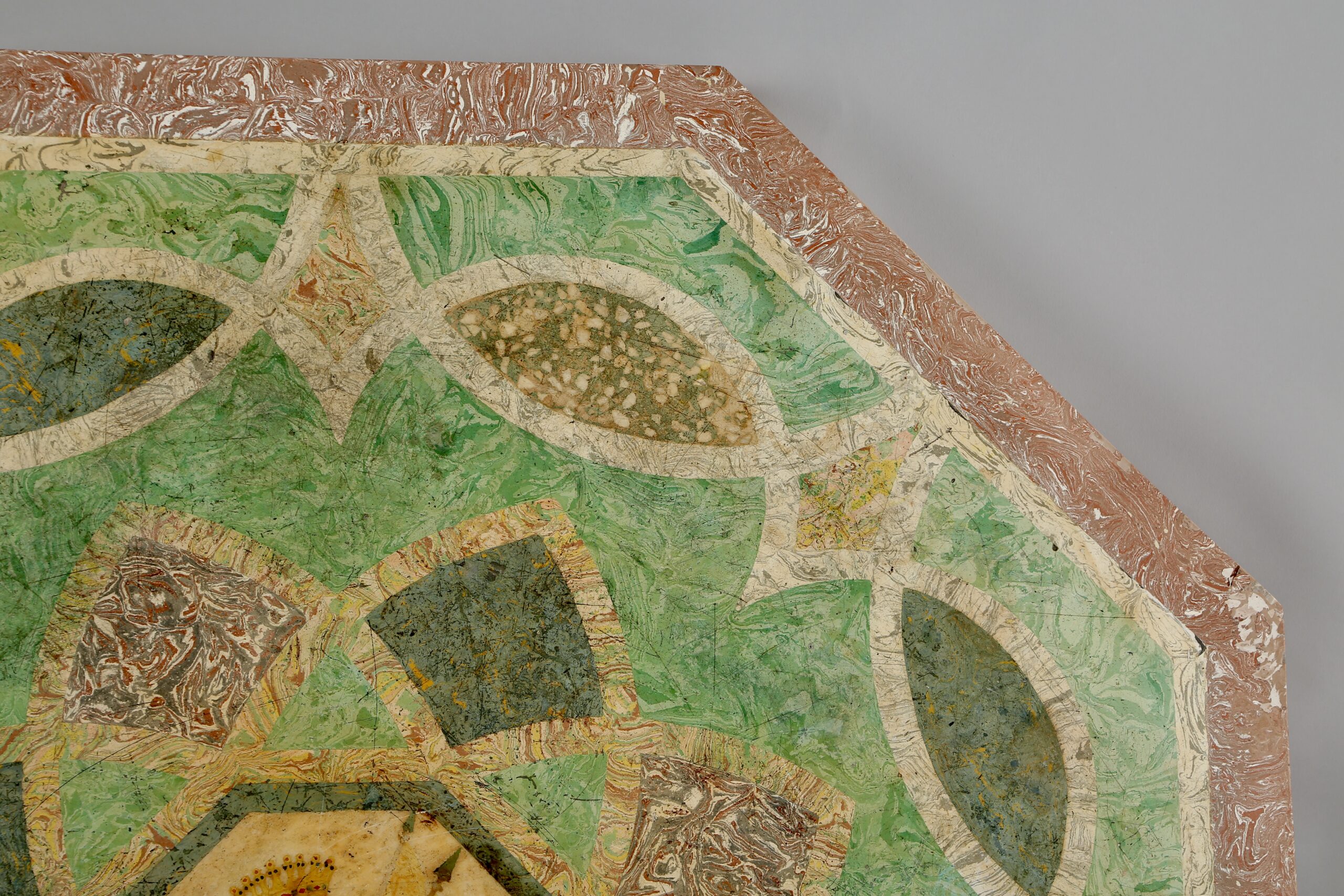Description
Scagliole tray, Italy 17th early 18th century
Dimensions: D 105 cm
Very beautiful and large octagonal scagliole tray.
Marble outline and central decoration of a coat of arms.
The composite coat of arms has different representations, so this could suggest a lineage between several large families. This meeting, codified by rules, reflects the type of union.
Here, the jeweled crown overhanging it and the ermine mantle would signify royal affiliation. The spears draped on each side could correlate with an honorary distinction.
Decor found in the coat of arms of Charle de Montmorency Damville.
Probably Italian from the 18th century, this coat of arms quartered on the first, with the two-headed eagle, the lowered flight, crowned with the two heads, is of illustrious belonging.
The eagle is, at this time, one of the highest representations in heraldry: often associated with the Holy Roman Empire.
It could be attributed to the Tocco family of Kefalonia.
Indeed, the coat of arms discovered on the edge of a well in the medieval fortress of Arta presents a coat of arms which has a sinister illustration of a doubly crowned two-headed eagle (relation to Byzantium). Like ours, it presents itself with its wings not spread and its beak closed, a crown overhanging each head.
However, unlike ours, it is gold.
Other coats of arms, those of Enzo of Sardinia could, by similarity, also correspond to ours. Of a two-headed eagle, wings semi-spread, similar in the simplicity of the representation and its color. He does not wear crowns, however, Enzo of Sardinia being king in 1238, it is indisputable that his coat of arms was modified in the following centuries by alliances between families.
The San Martino family, from Sicily, has a coat of arms which in two points could correspond to that of the Scagliole plateau.
Ours is quartered at 4 azure, with a single flower with thorns and at 2 azure, with two flowers of the same.
Floral representation in heraldry is not rare but often with a single petal. A less common stem representation could be related to the San Martino Ramondetta family which presents
« Gold, with a bend Gules, accompanied by two roses of the same, stemmed and leafed Vert. »
– Princely crown.
– Supported by the imperial eagle, sable, lowered flight, crowned with both heads, holding the banner of Jerusalem with the right paw.
(Sources:
– The coat of arms of Sicily: that is to say the heraldic collection, for Palizzolo Gravina, 1871-1875.
– Heraldic and chivalric encyclopedia; Noble manual, by Goffredo di Crollalanza, 1876-1877. )
In 1235, following an imperial decree from Frederick II (of the Holy Roman Empire), father of Enzo of Sardinia, the San Martino Ramondetta family (coming from a noble lineage) had the privilege of displaying the “imperial eagle” in its coat of arms, this one holding a banner with the coat of arms of Jerusalem.
This follows the great act of Raimondo S. (from whom San Martino descends), native of Gascony, lord of Miger and Tourpes, who was a valiant knight in the wars of the Holy Land
He was the first to scale the walls of the Holy City to plant the standard of the Crusader Knights.
Our coat of arms, quartered at 3, of a dextrocher of complexion holding a three-stemmed flower in gold. This representation, although a little different, could be related to the Desmarets family.
Finally, the Jerusalem cross, also known as the cross of the holy land, ends the coat of arms in the lower part, under the ermine mantle.
Work of Italie XVIIIe century .
